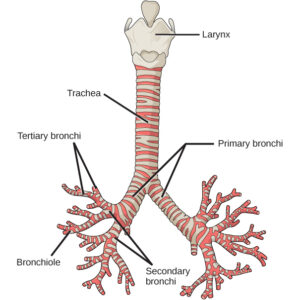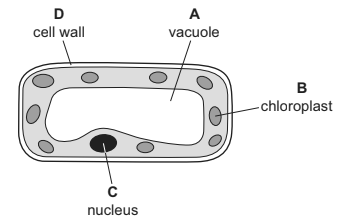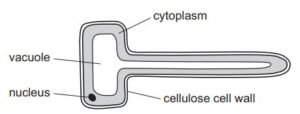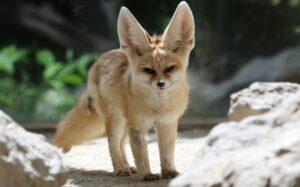Question
For which process is a root hair cell adapted?
A absorption of mineral ions
B support of stem
C translocation of sucrose
D transport of oxygen
▶️Answer/Explanation
A
A root hair cell is adapted for the absorption of mineral ions, so the correct answer is A) absorption of mineral ions. Root hair cells are specialized structures found in the epidermis of plant roots. Their long, slender shape and large surface area increase the efficiency of nutrient absorption from the soil. The root hair cell’s primary function is to absorb water and mineral ions, such as nitrogen, phosphorus, and potassium, from the surrounding soil. This absorption is crucial for the plant’s growth, development, and overall nutrient uptake.
Question
Which row describes a root hair cell?

▶️Answer/Explanation
B
A root hair cell is a specialized cell found in the epidermis of plant roots. It plays a vital role in absorbing water and nutrients from the soil. The root hair cell has a long, slender projection called a root hair, which greatly increases the surface area of the root.
The increased surface area of the root hair allows for more contact with the soil, which in turn enhances the absorption of water and mineral nutrients. This is important for the plant’s growth and survival. Water moves into the root hair cell through a process called osmosis, where water molecules move from an area of higher concentration (in the soil) to an area of lower concentration (inside the root hair cell). This influx of water helps maintain the plant’s hydration and enables the transport of nutrients throughout the plant. The presence of root hairs is a remarkable adaptation of plants to optimize their ability to acquire water and nutrients from the soil efficiently.
Root hairs do not allow water to pass out of the plant through transportation.
Question
The diagram shows some cells.

Where are these cells found?
A alimentary canal
B blood
C bronchus
D plant roots
▶️Answer/Explanation
C
>The bronchus is a part of the respiratory system that carries air from the trachea to the lungs. It is lined with specialized cells that help in the process of respiration.
1. Cilia: Cilia are tiny hair-like structures present on the surface of certain cells, including the ciliated cells found in the bronchus. These cilia move in coordinated waves, helping to move mucus and trapped particles out of the airways. They play a crucial role in the clearance of respiratory secretions and help to protect the lungs from harmful substances.
2. Cytoplasm: Cytoplasm is a gel-like substance that fills the interior of cells. It contains various organelles, such as mitochondria and ribosomes, which are involved in cellular functions like energy production and protein synthesis. The cytoplasm also houses other cellular components necessary for cell metabolism and maintenance.
3. Nucleus: The nucleus is a membrane-bound organelle present in most cells, including the cells of the bronchus. It contains the cell’s genetic material in the form of DNA. The nucleus regulates gene expression, controls cell division, and plays a crucial role in maintaining cellular function and integrity.
These components work together to maintain the normal functioning of the bronchus and facilitate the process of respiration.

Question
Which description of an adaptive feature is correct?
A a change in phenotype that is caused by the environment
B a change in the environment that is an advantage to an organism
C an action by an organism that aids its ability to survive and reproduce
D an inherited feature that increases an organism’s ability to survive and reproduce
 Answer/Explanation
Answer/Explanation
D
An inherited feature that increases an organism’s ability to survive and reproduce.
An adaptive feature is a trait or characteristic that enhances an organism’s fitness and increases its chances of survival and reproduction in a specific environment. These features are typically inherited from parent organisms and can be advantageous in specific conditions or situations. They contribute to an organism’s adaptation to its environment and improve its chances of passing on its genetic material to future generations.
Question
The diagram shows a plant cell.
In which labelled part of the cell is sugar made?

▶️Answer/Explanation
B
In plant cells, sugar is primarily produced in the chloroplasts, which are labeled as part of the organelles involved in photosynthesis. Chloroplasts contain a pigment called chlorophyll that captures sunlight energy and converts it into chemical energy through the process of photosynthesis. During photosynthesis, plants convert carbon dioxide and water into glucose (a type of sugar) and oxygen using the energy from sunlight. The glucose produced in the chloroplasts can be used for energy or stored as starch in various parts of the plant.
Question
A feature of some plants that live in dry places is that the leaves are reduced to spines.
What is an advantage of the leaves being reduced to spines?
A decrease in photosynthesis
B decrease in transpiration
C increase in photosynthesis
D increase in transpiration
▶️Answer/Explanation
B
One advantage of leaves being reduced to spines in plants that live in dry places is a decrease in transpiration. Transpiration is the process by which water evaporates from the leaves of a plant. In arid or desert environments where water is scarce, plants with reduced or modified leaves, such as spines, can reduce water loss through transpiration.
By having spines instead of regular leaves, the surface area exposed to the atmosphere is reduced, leading to less water loss through evaporation. This adaptation helps the plant conserve water and survive in dry environments with limited water availability.
Question
The diagram shows a root hair cell.

How is this cell modified for the absorption of water?
It has a cellulose cell wall.
It has a thin layer of cytoplasm.
It has a large surface area.
It has a large vacuole.
▶️Answer/Explanation
C
Root hair cells are specialized structures found in the roots of plants and are adapted for the absorption of water and nutrients from the soil. One of the key adaptations of root hair cells is the large surface area they possess. This increased surface area is achieved through the presence of numerous hair-like projections called root hairs. These root hairs greatly enhance the cell’s ability to come into contact with water and mineral ions present in the soil, allowing for efficient absorption.
Options A, B, and D are not directly related to the modification of root hair cells for water absorption.
Question
Foxes are mammals. The table shows adaptations of four different species of fox.
Which fox is best adapted to live in a hot dry desert region?
| behaviour | ear size | fur colour | daily volume of urine produced |
A | mainly active in the day | very small | white | large |
B | mainly active at night | very large | pale brown | small |
C | mainly active at night | small | dark brown | large |
D | mainly active in the day | large | dark grey | small |
▶️Answer/Explanation
B
The Fennec Fox (Vulpes zerda) is best adapted to live in a hot, dry desert region. This small fox species is found in the Sahara Desert and other arid regions of North Africa. It possesses several adaptations that enable it to thrive in such harsh environments:
Large Ears: The Fennec Fox has extremely large ears, which serve as both radiators to dissipate excess heat and as sensitive listening devices to detect prey and potential predators.
Nocturnal Behavior: Fennec Foxes are primarily nocturnal, meaning they are active during the cooler nighttime hours to avoid the intense heat of the day.
Pale Fur Color: Their pale brown fur coloration helps them blend in with the desert sand and reflects sunlight, reducing the amount of heat absorbed by their bodies.
Minimal Water Needs: Fennec foxes have adapted to obtain most of their water from the food they eat, reducing their dependency on external water sources. This is why their daily volume of urine produced is small.

